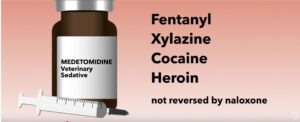
Lithium carbonate (not the element lithium) is used as a psychiatric medication primarily with bipolar disorder. It can be used with other psychiatric disorders such as major depression and schizophrenia, when first line medications are not effective. There are several advantages to lithium, particularly when it comes to cost. Available as a generic medication, a typical daily dose costs between 90 cents and $1.20. Major downsides are that therapeutic doses are just lower than toxic doses and there is the potential of direct damage to the kidneys and thyroid.
The website drugs.com said that since the toxic levels for lithium are so close to the therapeutic levels, patients and their families should watch for early symptoms, then discontinue the drug and inform the physician should they occur. Indications of lithium toxicity may include: diarrhea, vomiting, drowsiness, muscular weakness and lack of coordination. There are a host of other potential side effects that include: confusion, dry mouth, muscle twitching or trembling, vertigo, increased urination, memory problems and weight gain. These are only a few of the side effects found in 10% or more of the persons using lithium. See drugs.com or the Wikipedia listing for a more detailed discussion of lithium side effects.
In the late 1800s lithium was a popular ingredient in elixirs and tonics. It was even added to beer and other beverages. The theory was that it dissolved uric acid, so it could break up kidney stones and the uric acid crystals associated with gout. It was found to have no such effects. Lithium was eventually banned by the FDA in 1949 when it was found to cause cardiovascular problems.
Coincidentally, that same year an Australian physician named John Cade published a paper describing his treatment of 10 patients with mania with lithium. Cade had noticed that lithium made guinea pigs docile, so he thought it could have a therapeutic effect in manic patients. He announced dramatic effects in his paper and claimed they were specific to mania. What he failed to mention was that one patient died, two others had to discontinue lithium because of severe toxicity and one patient refused to take it. None of this was reported in his paper. Side effects were noted 41 times in the clinical records, but only 1 time in the published article. See The Myth of the Chemical Cure by Joanna Moncrieff for a more detailed description of lithium as a psychiatric treatment.
In Anatomy of an Epidemic, Robert Whitaker noted that psychiatrists in the U.S. had little interest in lithium until manic-depression was distinguished into unipolar and bipolar forms. Only a few placebo-controlled trials of lithium had ever been done up to that point. In 1985 UK researchers could only identify four with any merit. But within those studies, lithium was said to have a good response rate in 75% of the patients. This was much higher than the response rate in the placebo group.
A 1994 meta-analysis of nineteen studies by J.P. Baker of patients who were on lithium and had their lithium withdrawn showed that 53.7% of the patients relapsed, versus 37.5% of the lithium-maintained patients. This was seen as clear evidence that lithium prevented relapse. However, only 29% of patients who were gradually withdrawn from lithium relapsed. Note how this rate was better than those in the drug-maintained group.
Whitaker said this wasn’t very robust evidence of lithium’s benefit to patients, especially when you considered the additional studies raising concerns about lithium’s long-term effects. There was also a high rate of patients who stopped taking lithium—over 50%—because of how the drug dulled their minds and slowed their physical movements. In 1999 Baldessarini et al. found that almost half of all patients relapsed within five months of quitting lithium, while individuals who did not use lithium took nearly three years to reach that percentage of relapse. “The time between episodes following lithium withdrawal was seven times shorter than it was naturally.” Whitaker noted:
Although lithium is still in use today, it lost its place as a first-line therapy once “mood stabilizers” were brought to market in the late 1990s.
Now there has been a growing body of evidence that suggests lithium prevents suicide. In 2003 Baldessarini and others found that long-term lithium maintenance patients had lower suicide rates than individuals who did not. Cipriani et al. found lithium was an effective treatment for reducing the risk of suicide in people with mood disorders as well as bipolar disorder. Lewitzka et al. did a comprehensive review of more than 20 years of studies investigating the anti-suicide effect of lithium in patients with affective disorders. They also concluded lithium to be “an effective treatment for reducing the risk of suicide and suicide attempts in patients with affective disorders over the long-term course.”
Joanna Moncrieff reviewed several meta-analyses indicating the anti-suicide effects of lithium in The Myth of the Chemical Cure and said the studies included in these analyses had conflicting results. An article on her website, “Lithium and Suicide: What Does the Evidence Show?” said the proposed effect of decreased mortality rates was inexplicable since lithium was a toxic drug that made most people feel rather depressed. She wondered if the sedating effect of the lithium sapped people of the will to act. “A closer look at the evidence, however, suggests the idea [lithium reducing suicidality] is simply not justified.”
The first issue was that the evidence supporting this idea consisted of follow-up studies with individuals on long-term lithium, as with Copper et al. Moncrieff commented how these people are a particularly compliant group with medication. “People who follow their lithium regime religiously are, in general, not likely to be the people who are chaotic, impulsive, desperate and most likely to commit suicide.” One study, by Gonzalez-Pinto et al., showed that people who were highly compliant with their lithium were five times less likely than those who were ‘poorly compliant’ to commit suicide. A second issue was that given small margin of error between therapeutic and toxic doses of lithium, people with suicidality tendencies are less likely to be given lithium.
Another confounding issue is that people with medical conditions are less likely to be given lithium. Not only can lithium cause kidney and thyroid problems, but it interacts with many commonly prescribed drugs like diuretics, ACE inhibitors and NSAIDS like aspirin and ibuprofen. This can result in dangerously high lithium levels. So caution is used when starting lithium with someone who is physically sick or taking other medication. Moncrieff said better randomized controlled trials are needed.
She thought it curious that a meta-analysis by Cipriani et al. in 2013 did not include a single placebo-controlled trial where the suicide rate was zero, so she looked more closely at its methology. Moncrieff discovered that the authors excluded any trial whose treatment arm was uninformative, namely those whose suicide rates were zero. “This decision is totally unsound, however, as it reduces the denominator (the total number of participants) and thereby makes the events included appear more common than they actually were.” She speculated this was why some well-known studies were not included in the analysis of suicides. When the studies with no suicides were included, “the number of participants would have been much larger and the proportion of suicides in the placebo group much smaller.”
So there is the evidence on lithium and suicide. The meta-analysis that has been accepted as demonstrating that lithium prevents suicide spuriously inflated the suicide rate on placebo by excluding studies in which no suicides occurred. The only double blind, prospective study designed to test whether lithium reduces suicide in people at high risk, ended up unblinding many of its participants, and in any case suicidal events were low in both groups.
The fact that studies of suicide prevention have been so difficult to recruit to, suggests patients may have more sense than researchers in this field!





